Kettle’s Yard: A Tour Through Cambridge’s Modern Art Gallery
Kettle’s Yard, a somewhat modest home in the middle of Cambridge, UK, harbors an impressive art collection of predominantly modern and abstract...
Ruxi Rusu 24 June 2024
5 February 2021 min Read
In conversation with Dr. Michael Bennett, MFA Senior Curator of Early Western Art at the Museum of Fine Arts St. Petersburg, we explore the world of the Greek Geometric period and the Homeric epics.
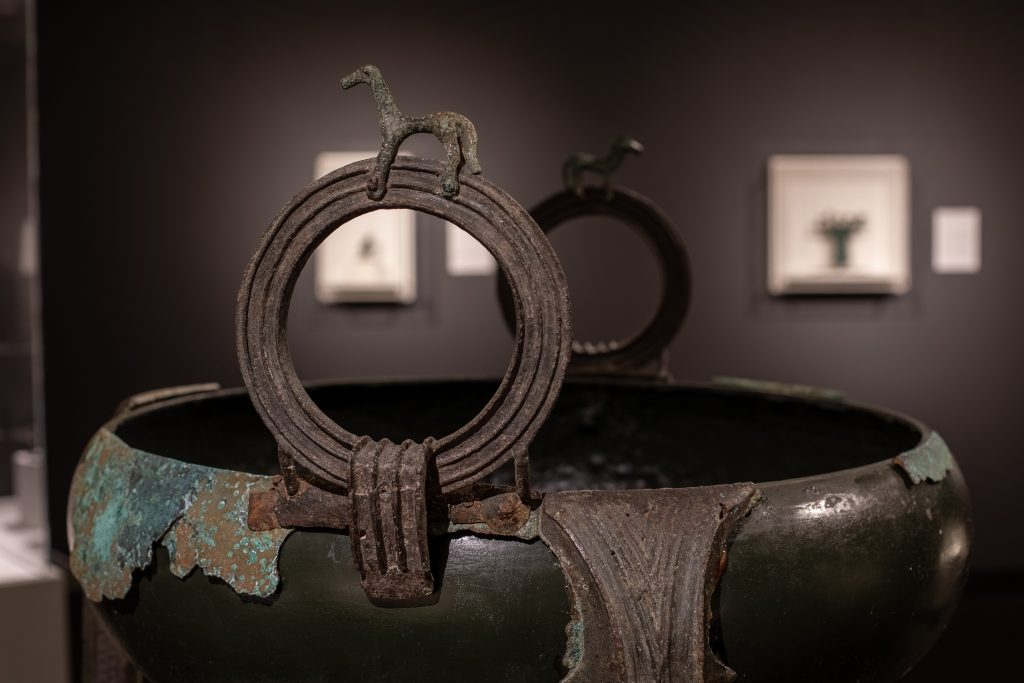
From Chaos to Order is the first major museum exhibition in more than 25 years in the United States to focus on Greek Geometric art (November 7, 2020 through April 11, 2021). The exhibition at Museum of Fine Arts, St. Petersburg, Florida, includes 57 objects from the Sol Rabin Collection. Doubtlessly, it is the most important private collection of Greek Geometric art. However, with the exception of three objects, this is the first time the works are on public display. The exhibition highlights a diversity of pocked-sized, Geometric art objects. In it we find statuettes of Greek gods and mortals, horses and other animals (bulls, peacock, ram, etc.), vases and personal adornments, such as warrior belts and pendants.
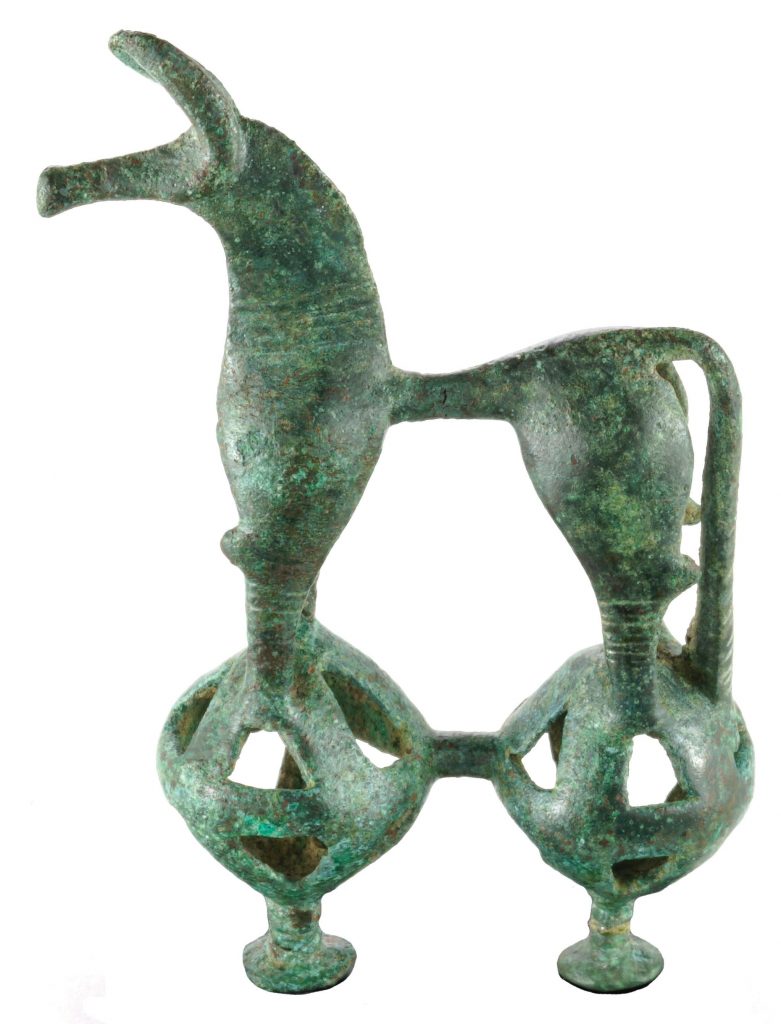
“This art is a composite of a larger vision… Geometric art distills reality by creating images that seek to capture the perfected ideal and structure behind the visual world.”
Dr. Michael Bennett, in conversation with Isla Phillips/DailyArt Magazine.
This period of ancient Greek art, as it’s label suggests, is characterized by geometric motifs.
“Geometric art was a foundational breakthrough – the “Big Bang” that set in motion what would follow. But viewing Greek art in terms of segmented “hierarchies” tends to obscure the reality that it was a continuum.”
Dr. Michael Bennett, in conversation with Isla Phillips/DailyArt Magazine.
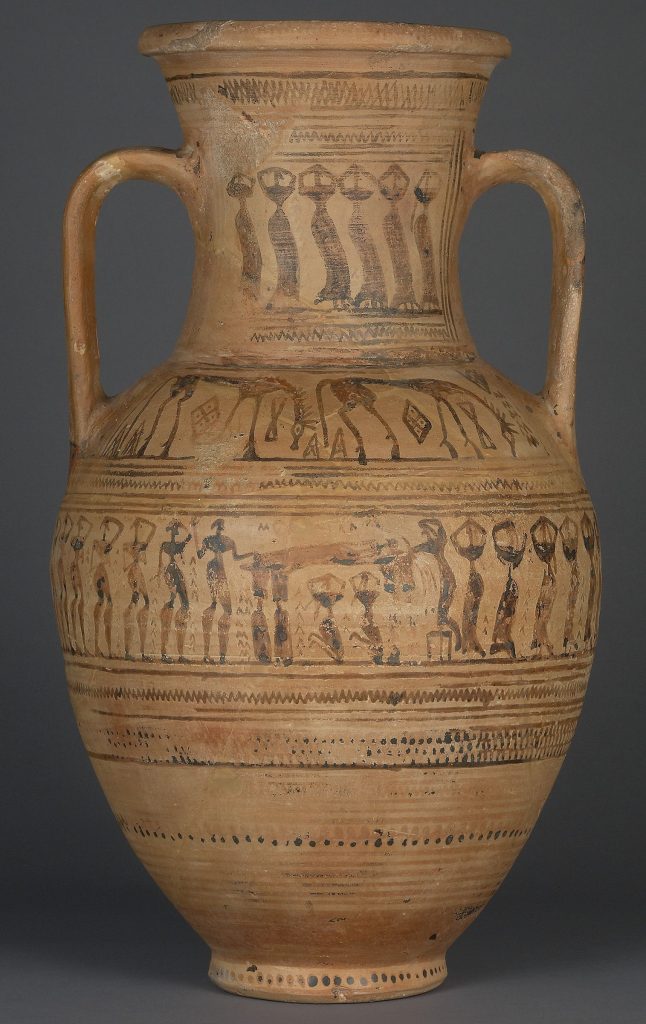
“Geometric art turns chaos into order in three-dimensional space by focusing on the essence of an object, or a moment in time… distills reality.”
Dr. Sol Rabin, From Chaos to Order exhibition catalogue.
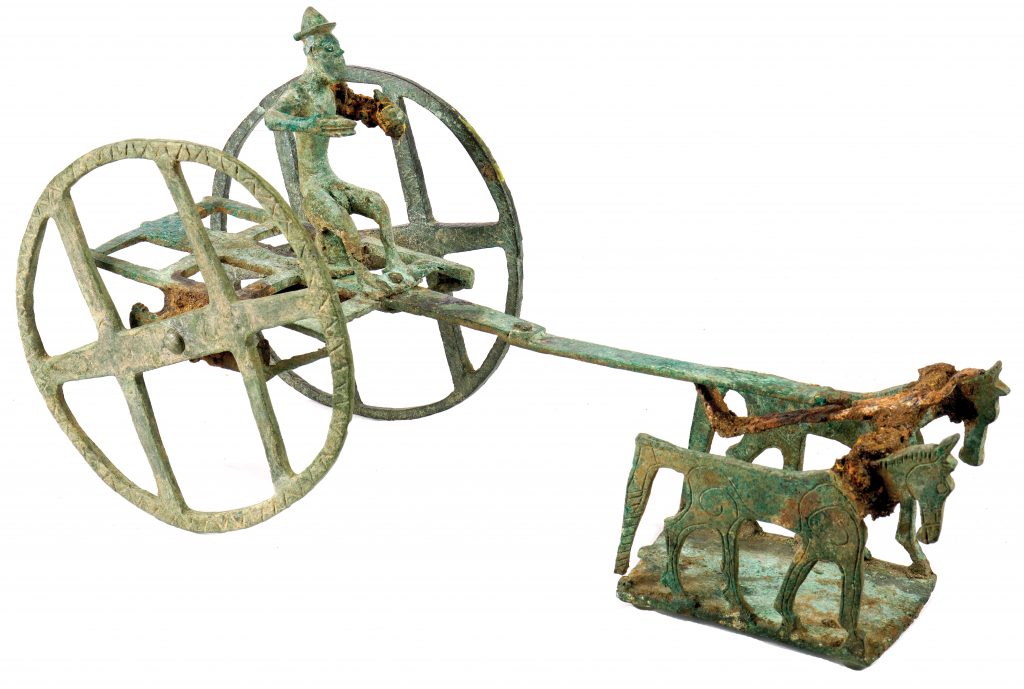
“One of my personal favorites among the animal statuettes is the buck. It probably should have been a “highlight.” To me, it exudes perfect confidence and optimism. The upright antlers and posture, combined with its harmonious proportions, impart an impression that it might soon levitate.”
Dr. Michael Bennett, in conversation with Isla Phillips/DailyArt Magazine.
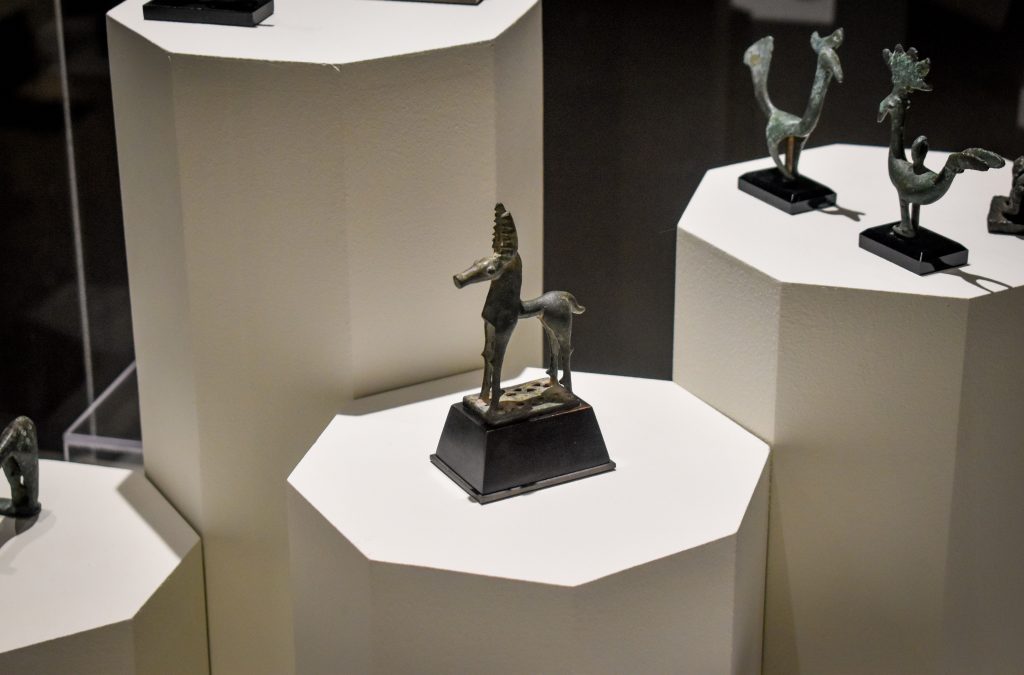
Learn more about the Ancient Greek stylistic periods here, here and here.
“The Rabin Collection greatly aids in our understanding of the underlying values of the society that made these works, which can be understood as a kind of frozen poetry.”
Dr. Michael Bennett, in conversation with Isla Phillips/DailyArt Magazine.
The Greek epic cycle is the end product of a long-standing tradition of oral story-telling possibly from the 9th century BCE. Specifically, it recalls and remembers societies from the Mycenean periods (c.1600-1110 BCE). What we know today as the Homeric Epics (Illiad and Odyssey) were written down between 900-700 BCE, once the invention of writing came about. As mentioned above by Dr. Bennett, this was a ‘Big Bang’ moment, that allows us to glimpse into a beautiful and nostalgic depiction of society.
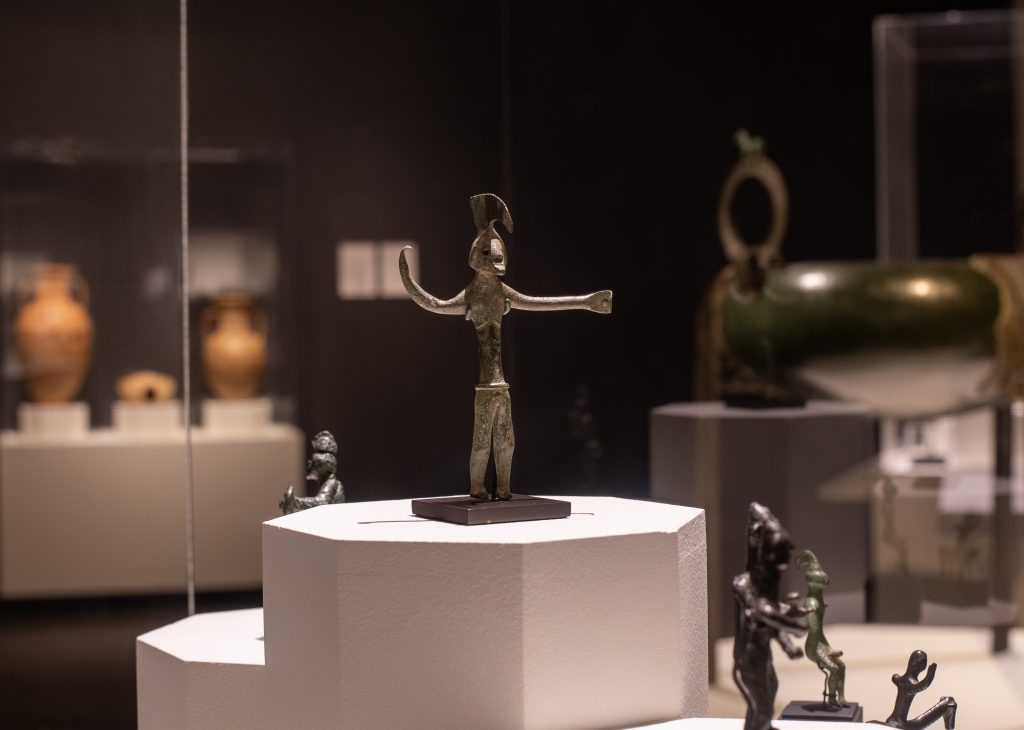
“The Iliad and the Odyssey were harkening back, nostalgically, to an age of heroes. Yet these epics are portraits of cherished ideals and values still relevant in the 8th century BCE, and indeed throughout Greek historical memory. They are an historical compendium of such values”
Dr. Michael Bennett, in conversation with Isla Phillips/DailyArt Magazine.
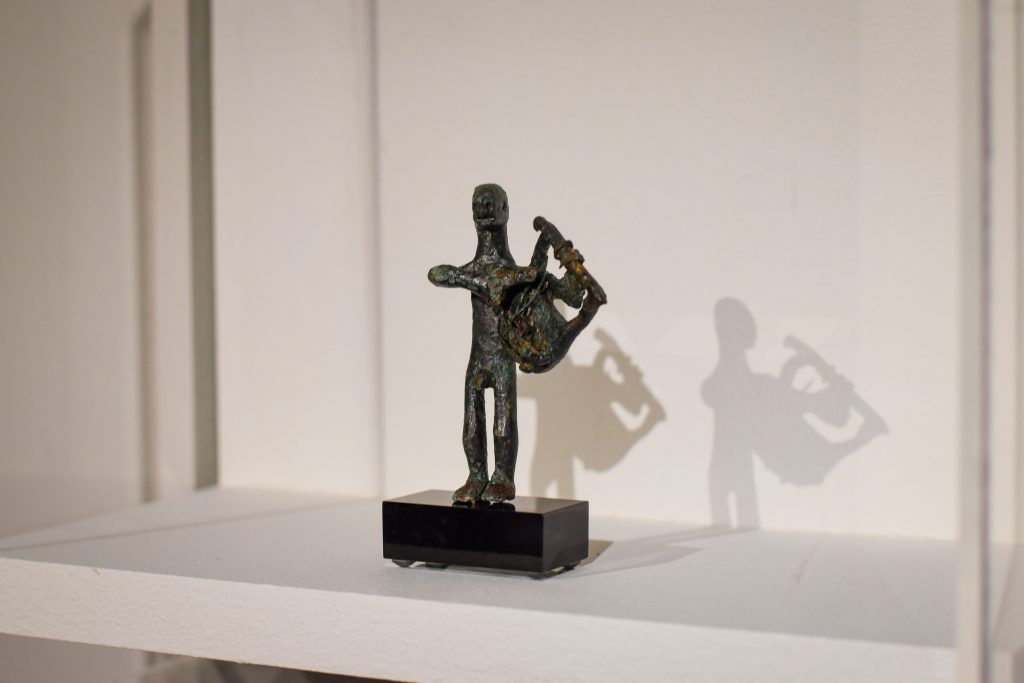
“The maker and dedicator of the statuette most likely witnessed a performance of epic, and therefore this work further proves that imagery in the Geometric period is often informed by the epic tradition. Bronzes such as these were dedications at sanctuaries. Apollo is a reasonable possibility. Of course, we cannot know for sure. Note that he is singing, and that Hesiod, the other epic poet of the period, did not play this instrument.”
Dr. Michael Bennett, in conversation with Isla Phillips/DailyArt Magazine.
For literature lovers, one of the most exciting things about From Chaos to Order is how it seeks to make links to the Homeric Epics. It gives us tantalizing suggestions that we are looking at characters from the stories and even ‘visual similes’.
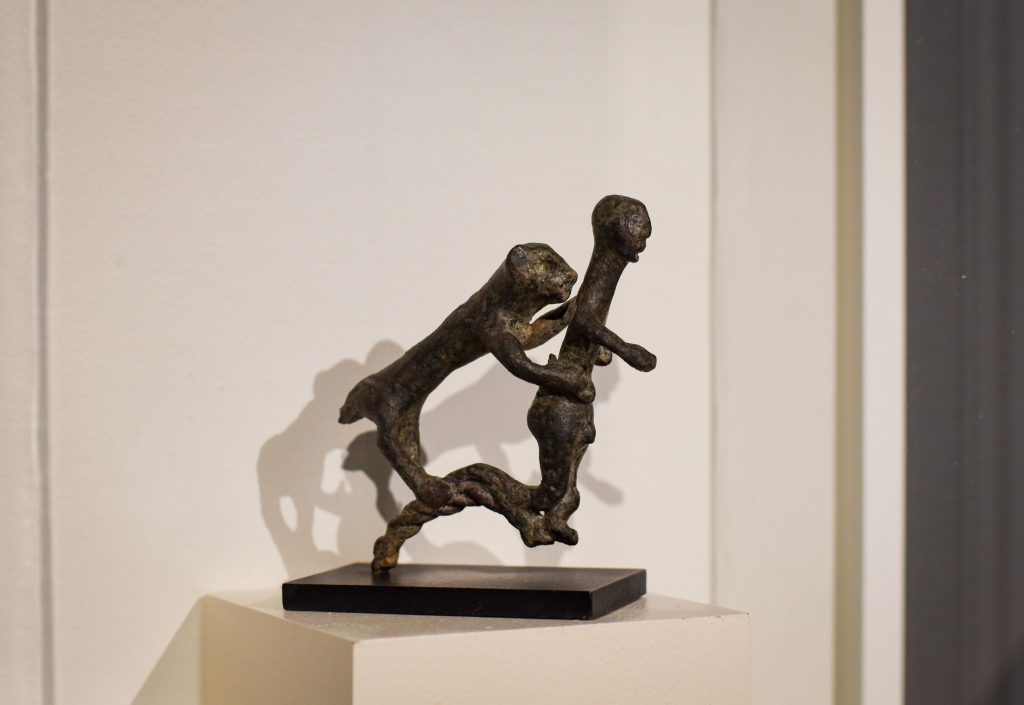
“It is clear that the Sol Rabin Collection reflects the Homeric tradition (or more precisely, the storytelling tradition of early Greece), both in its descriptions of peaceful nature and warfare. This proves that this art is, in large part, an analogue of epic poetry. It is a parallel effort to order the world with images that are metaphors, similes, and at times direct transcriptions taken from performances of epic poetry. We can see this in both the details and the overall picture. The totality of the iconographic evidence makes this point.”
Dr. Michael Bennett, in conversation with Isla Phillips/DailyArt Magazine.
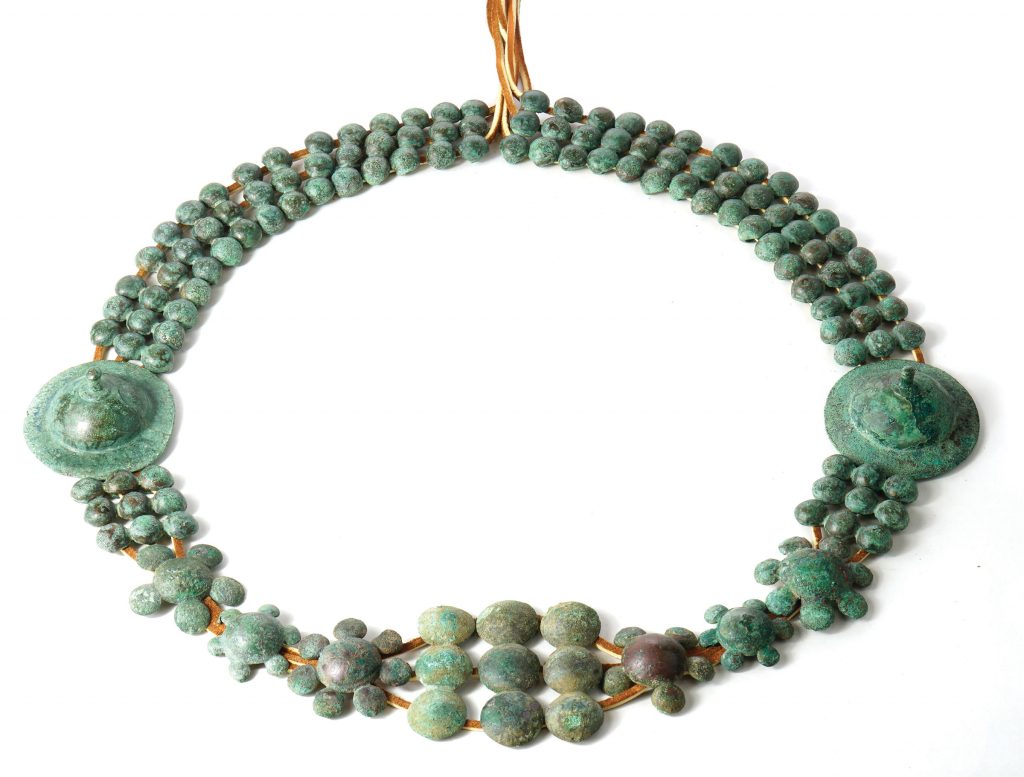
“The figures of Agamemnon and Menelaus may be associated as brothers by their common base and identified by the zosteres (war belts) they wear. Note that Agamemnon, Menelaus, and Nestor wear special zosteres in the Iliad.”
Dr. Michael Bennett, in conversation with Isla Phillips/DailyArt Magazine.
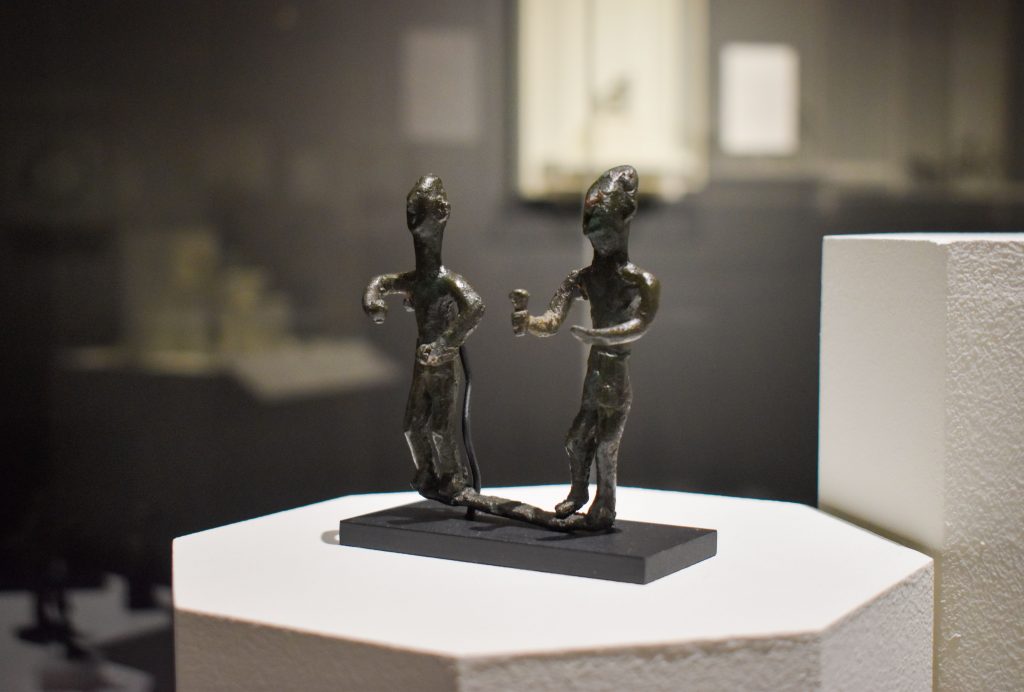
“Bronze was the medium for the gods. The pygmy and crane group is clearly inspired by a passage in the Iliad, or, indeed, a related passage from the storytelling tradition culminating with the Iliad. The same is true for the Man and Lion group. These last two bronze groups are best understood as visual similes.”
Dr. Michael Bennett, in conversation with Isla Phillips/DailyArt Magazine.
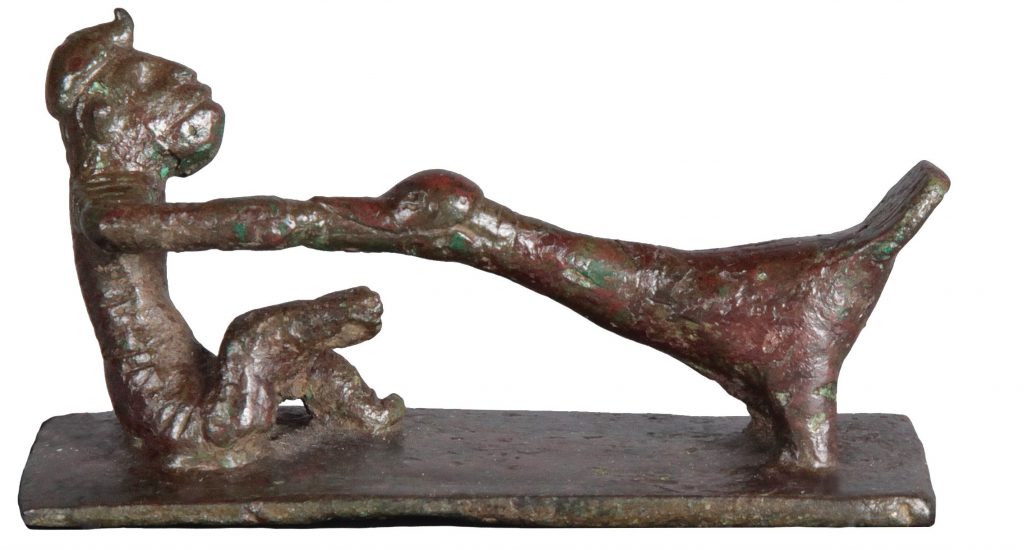
Dr Rabin is the world’s leading collector of Greek Geometric art and his collection is one of the finest in the world. In fact, this groundbreaking exhibition is a continuation of Rabin’s generosity and commitment to scholarship because for decades he has been sharing key works and making the collection available. However, From Chaos to Order: Greek Geometric Art from the Sol Rabin Collection is the first major exhibition to explore new ideas about Geometric art in decades.
“A collection nurtured over decades by Sol Rabin’s longstanding relationships with Professor David Mitten and Dr. Michael Bennett. The kinship among these specialists in this area of Greek art history has clearly been a joy to all three, and their many years of discussion, observation, and study together have culminated in this exhibition.”
Kristen A. Shepherd, Executive Director and CEO Museum of Fine Arts, St. Petersburg, From Chaos to Order exhibition catalogue.
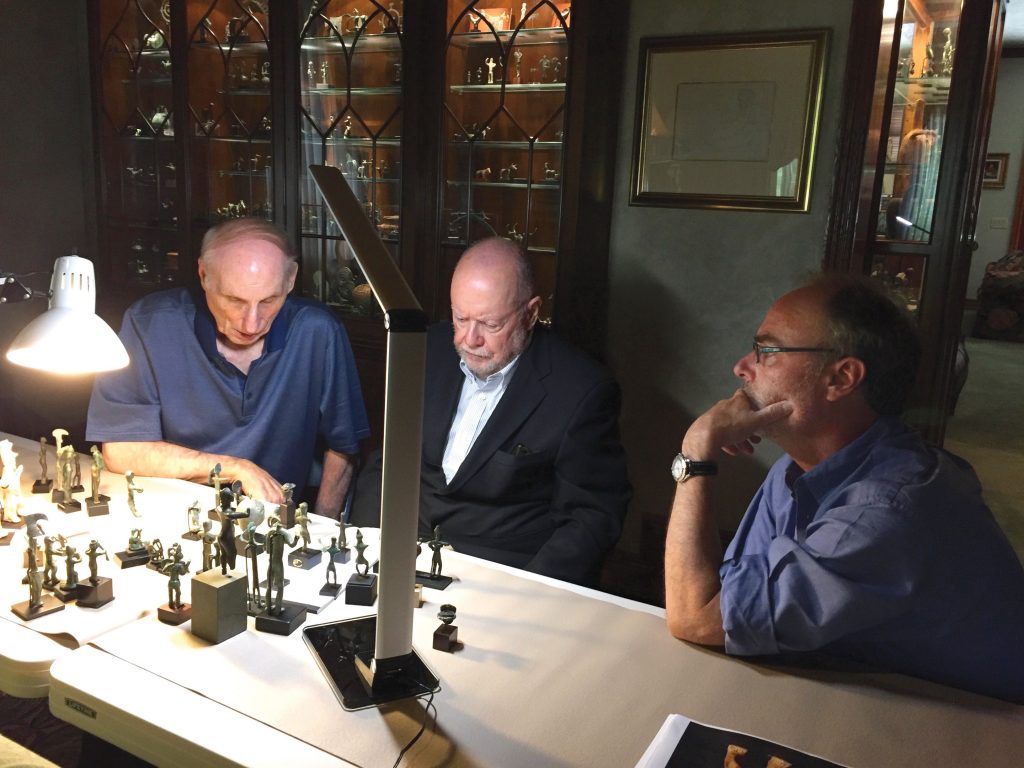
“My love for Geometric art was triggered by a small Geometric bird in a gallery filled with ancient art. I vividly remember that long moment. My six-month-old daughter in her stroller was also intrigued, and when she grew up she formed her own ancient art collection.”
Dr. Sol Rabin, From Chaos to Order exhibition catalogue.
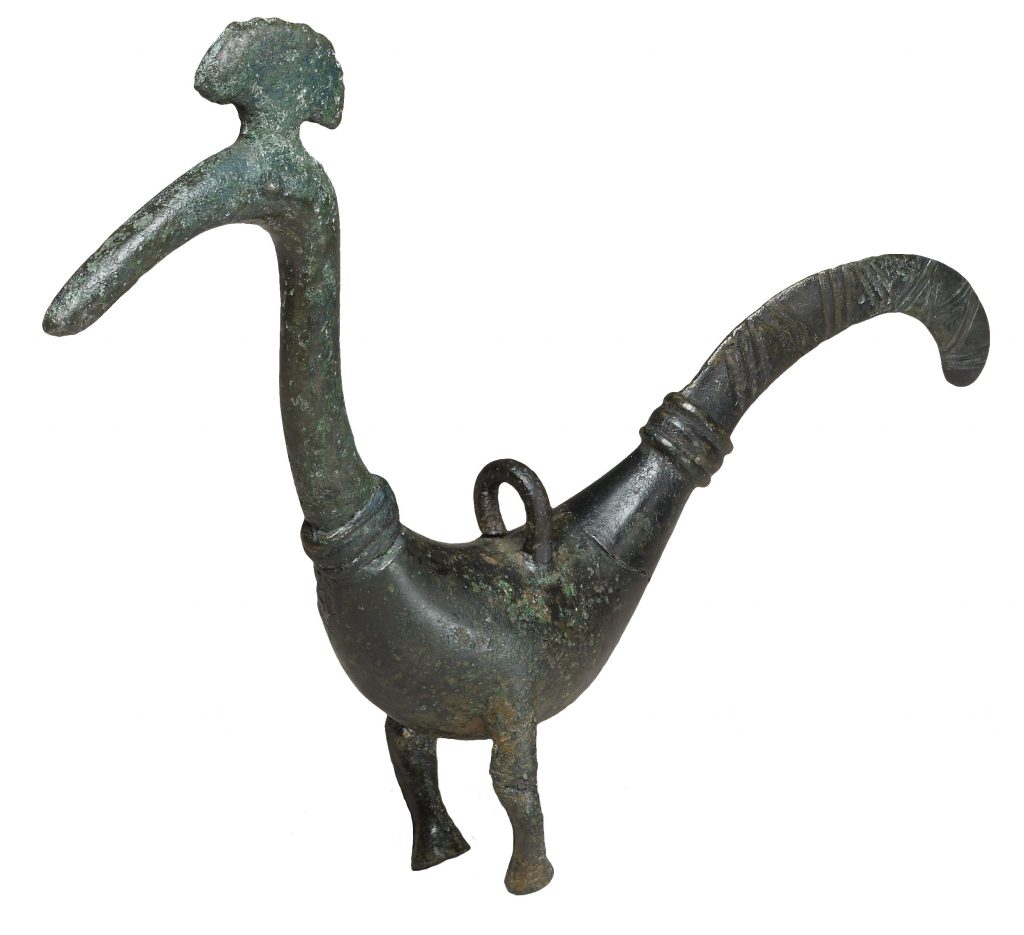
DailyArt Magazine needs your support. Every contribution, however big or small, is very valuable for our future. Thanks to it, we will be able to sustain and grow the Magazine. Thank you for your help!